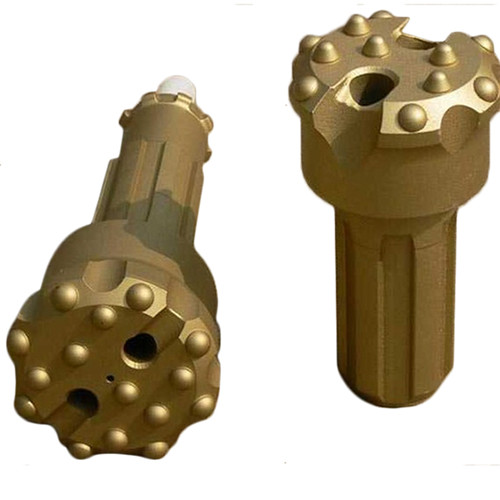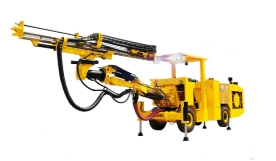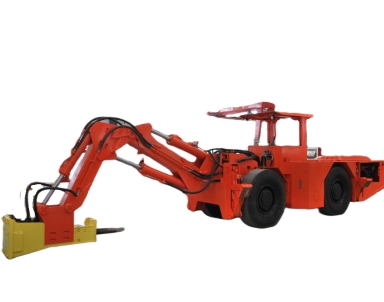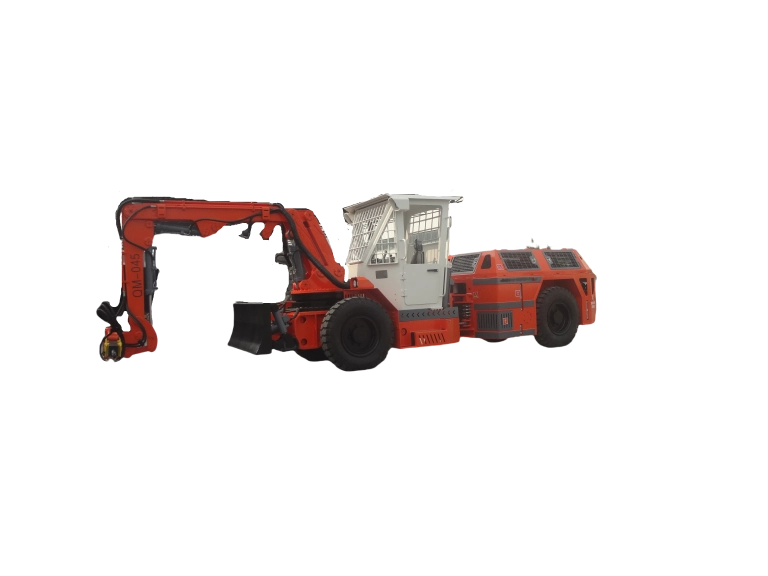Underground mining keeps the world running with vital resources. But it’s tough work. Loose rocks on walls and ceilings can turn a routine day into a hazard. That’s where scaling comes in. Scaling clears away those unstable bits to keep everyone safe. And rock drill tools? They make the job faster and more precise. If you’re in the mining game, you know how crucial good tools are for getting the work done right. This post dives into how these tools help scale operations underground. We’ll look at their role, benefits, and tips for using them well. Stick around to see how they can change your site for the better.
What Is Scaling in Underground Mining?
Scaling removes loose rock from tunnel roofs and sides after blasting or digging. It stops falls that could hurt workers or damage gear. In tight spaces deep below ground, this step is key to safe digging.
Workers used to do it by hand with bars and picks. That took time and put people at risk. Now, machines handle most of it. Rock drill tools fit right into this shift. They drill into rock faces to loosen weak spots or attach scaling arms that knock off debris.
Think about a fresh tunnel after a blast. Dust settles, and you spot cracks. Without scaling, those could collapse. Proper scaling keeps the area stable for the next crew.
Why Scaling Matters for Safety and Output
Safety comes first in mining. Falls from loose rock cause many accidents. Good scaling cuts that risk. It also lets teams move faster without stops for fixes.
Beyond safety, scaling affects how much you pull out each day. Clean, stable walls mean smoother hauling and less downtime. Mines that scale well see better flow in their work.
Rock drill tools add precision here. They target exact areas, so you avoid overdoing it and weakening good rock.
The Role of Rock Drill Tools in Scaling Operations
Rock drill tools do more than just bore holes. In scaling, they help break and remove unstable material. These tools come in forms like jumbos or rigs mounted on vehicles. They use hydraulic power to drive bits into rock.
In underground settings, space is tight. Tools need to maneuver in narrow veins. Good ones turn sharp and reach high without much fuss. They also handle dust and water common in mines.
Operators rely on these for quick setups. A solid tool lets you scale a section in hours, not days. That keeps the whole operation on track.
Types of Rock Drill Tools Used for Scaling
Different tools suit different jobs. Here’s a quick look:
- Development Rigs: These handle initial tunneling. They drill patterns to loosen rock for scaling. Compact designs fit small spaces.
- Production Jumbos: For larger areas, these drill multiple holes fast. They position accurately to target loose zones.
- Pick Scalers: Specialized for direct scaling. They use hammers or picks to chip away debris. Diesel or electric power keeps them running strong.
Each type brings something unique. Pick what matches your mine’s layout.
| Tool Type | Main Use in Scaling | Key Feature |
|---|---|---|
| Development Rigs | Preparing tunnels for safe access | Compact structure for tight turns |
| Production Jumbos | Drilling in bigger faces | Accurate angle control for precision |
| Pick Scalers | Removing loose rock directly | High impact power for tough material |
Using the right tool means less waste and more control.
How These Tools Improve Efficiency
Rock drill tools speed things up. They penetrate hard rock quicker than manual methods. This cuts labor hours.
They also reduce fuel use in some cases. Electric versions pollute less underground, which helps air quality for workers.
In one mine, switching to better drill tools dropped scaling time by half. Teams hauled more ore without extra shifts. Small changes like sharper bits or stronger arms make big differences.
Keep tools sharp. Dull ones slow you down and wear out faster.
Challenges in Scaling and How Rock Drill Tools Help

Underground mining throws curveballs. Variable rock types mean some areas scale easy, others fight back. Water seeps in, making surfaces slippery.
Rock drill tools tackle these head-on. Adjustable power lets you match the rock’s hardness. Waterproof seals keep them working in wet spots.
Dust is another issue. It clogs airways and hides dangers. Tools with good ventilation clear the air as they work.
Operators face fatigue in long shifts. Ergonomic designs in tools ease that. Comfortable cabs with clear views reduce strain.
Overcoming Common Hurdles
Hard rock resists scaling. Tools with high torque break through without bogging down.
Narrow tunnels limit movement. Slim profiles on drills slip into tight spots.
Vibration shakes things up. Modern tools dampen it, so operators stay focused.
Bullet points for quick fixes:
- Check rock type before starting. Adjust tool settings.
- Train teams on tool use. It prevents mishaps.
- Schedule regular checks. Catch wear early.
These steps keep scaling smooth.
Best Practices for Using Rock Drill Tools in Scaling
Get the most from your tools with smart habits. Start with site assessment. Map out weak areas.
Position tools right. Wrong angles waste time.
Train your crew well. Skilled operators spot issues fast.
Mix tool types for full coverage. A jumbo for drilling, then a scaler for cleanup.
Track performance. Note how long tasks take. Adjust as needed.
Maintenance Tips to Keep Tools Running
Tools last longer with care. Clean after each use. Dust builds up quick.
Lubricate moving parts. It cuts friction.
Inspect hydraulics. Leaks slow you down.
Store in dry spots. Moisture rusts metal.
A well-kept tool saves money long-term.
Integrating Tools into Your Mining Workflow
Fit tools into daily routines. Scale right after blasting.
Coordinate with haulers. Clear paths keep trucks moving.
Use data from tools. Some track depth and force. Analyze to improve.
This approach builds efficiency step by step.
Building a Stronger Mining Operation
Rock drill tools don’t just scale rock. They build trust in your team. Safe sites mean happy workers. That lifts morale and keeps talent around.
For managers, these tools show commitment to quality. Clients notice when operations run smooth. It strengthens your rep in the industry.
Personal growth comes too. Operators gain skills on advanced tools. That boosts careers.
Invest in good tools. It pays off in safer, faster work.
Yantai Chi Hong Machinery Co., Ltd.: Your Trusted Rock Drill Tools Supplier
Yantai Chi Hong Machinery Co., Ltd. stands out as a key player in underground mining gear. Based in Yantai City, China, the company has grown over 12 years into a top supplier. They focus on research, production, sales, and service for mining machines.
With a big production base and over 300 staff, including many senior tech workers, they deliver high-quality rock drill tools. Certifications like EU CE and international quality standards back their work. They make loaders, trucks, jumbos, scalers, and parts. Their process includes cutting, welding, machining, and assembly with strict checks.
They serve mines worldwide, offering free maintenance for the first year or 2000 hours. Their team solves problems fast, often within 24 hours online. This support helps mines run without hitches.
Conclusion
Rock drill tools transform scaling in underground mining. They make tough jobs safer and quicker. From development rigs to pick scalers, these tools handle real-world challenges. By picking the right ones and keeping them in shape, you boost your site’s output and safety. Mines that embrace this tech stay ahead. It’s about more than tools—it’s building a solid foundation for success.
FAQs
What are rock drill tools, and how do they help in scaling underground mining?
Rock drill tools include rigs and jumbos that bore into rock faces. In scaling underground mining, they loosen unstable material for safe removal. This cuts risks and speeds up work in tight tunnels.
Why choose specialized rock drill tools for scaling operations?
Specialized rock drill tools offer precision and power for hard rock. They fit narrow spaces and reduce downtime, making scaling underground mining more efficient than basic methods.
How often should you maintain rock drill tools used in scaling?
Maintain rock drill tools after each major use or per schedule. Regular checks prevent breakdowns during scaling underground mining, keeping operations smooth.
Can rock drill tools improve safety in underground mining?
Yes. Rock drill tools target loose rock accurately, reducing fall hazards. This makes scaling underground mining safer for crews.
What factors to consider when selecting rock drill tools for your mine?
Look at tunnel size, rock type, and power needs. Good rock drill tools match your setup for effective scaling underground mining.










